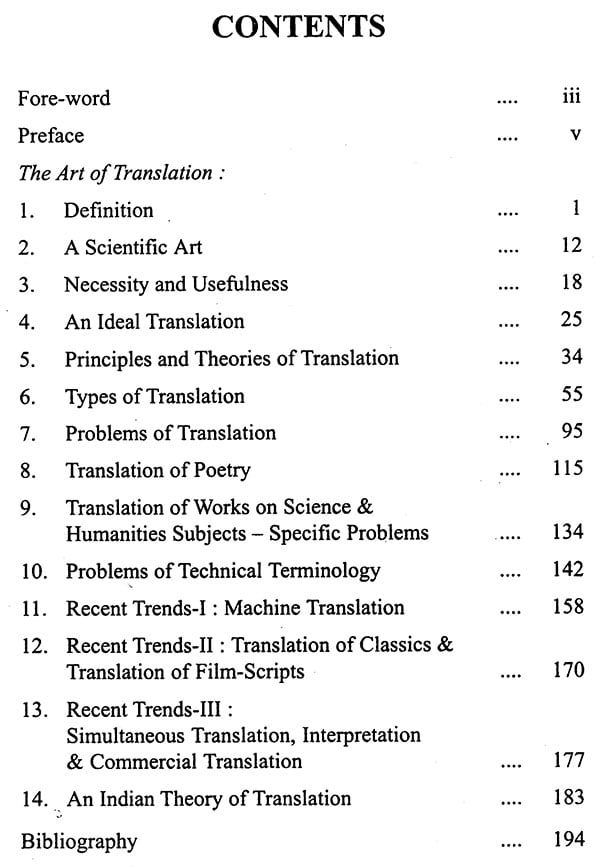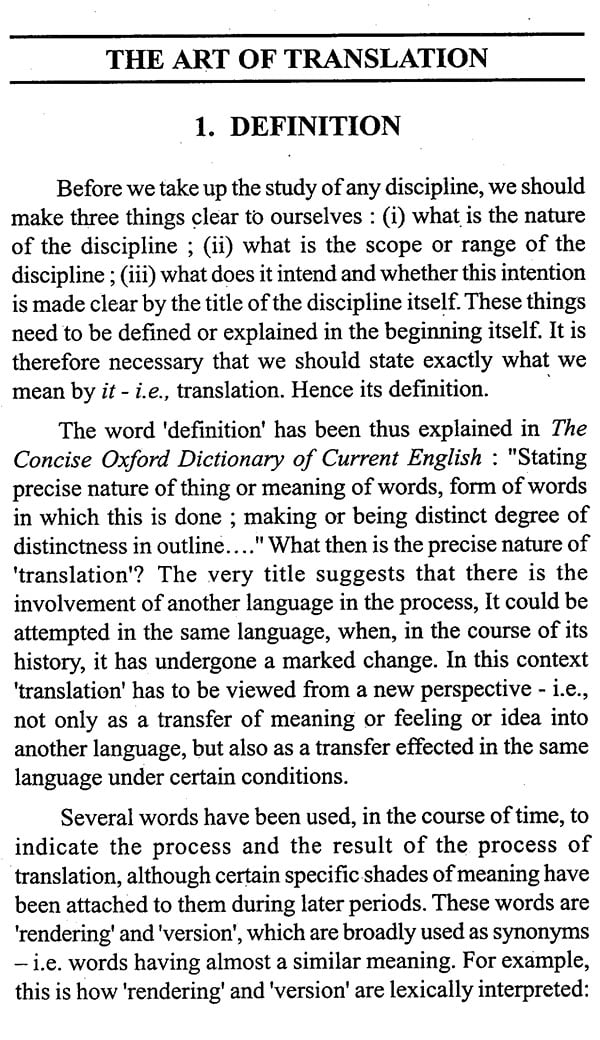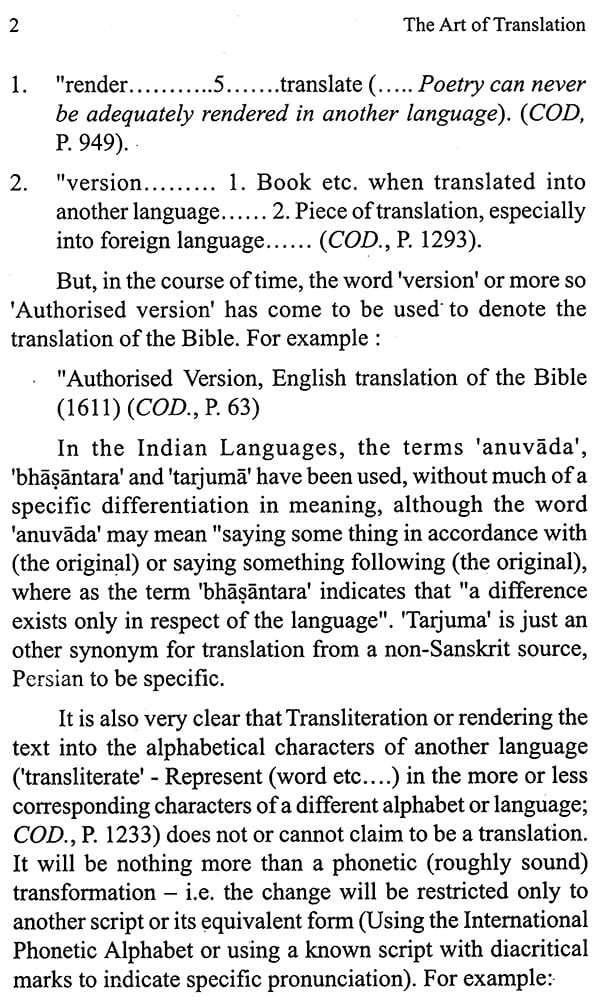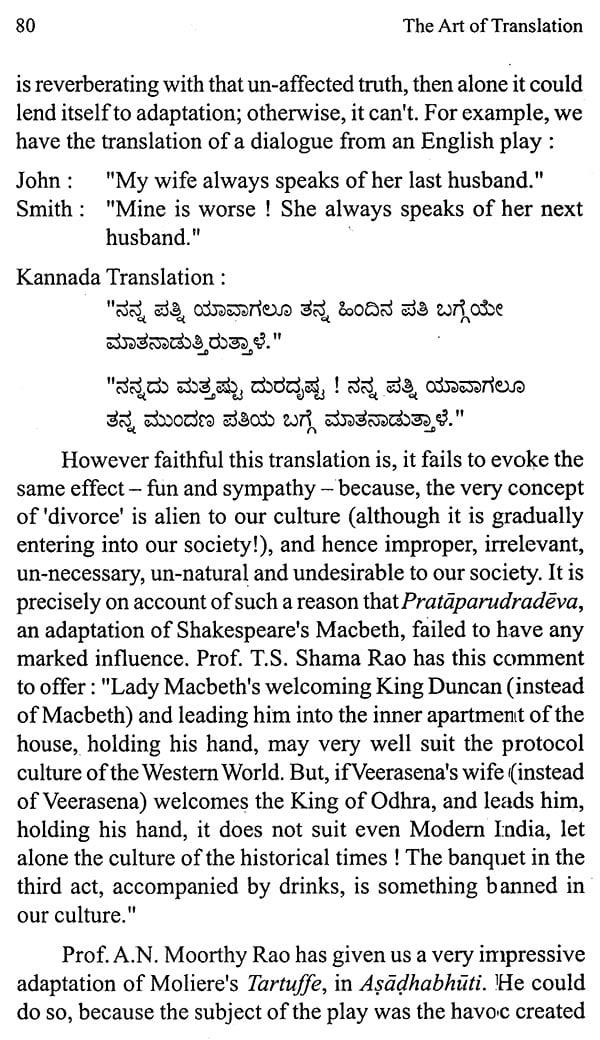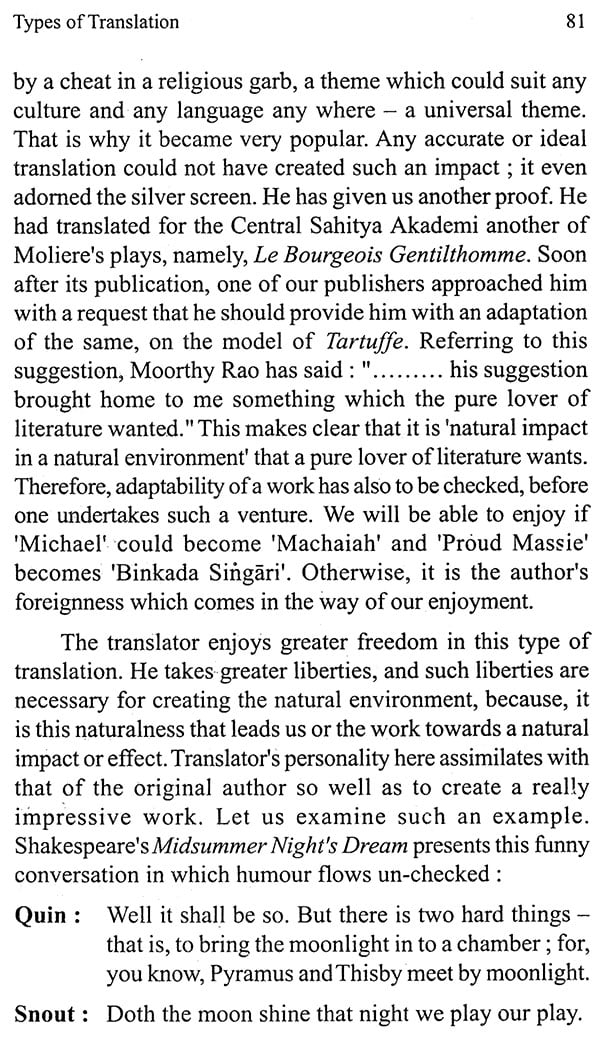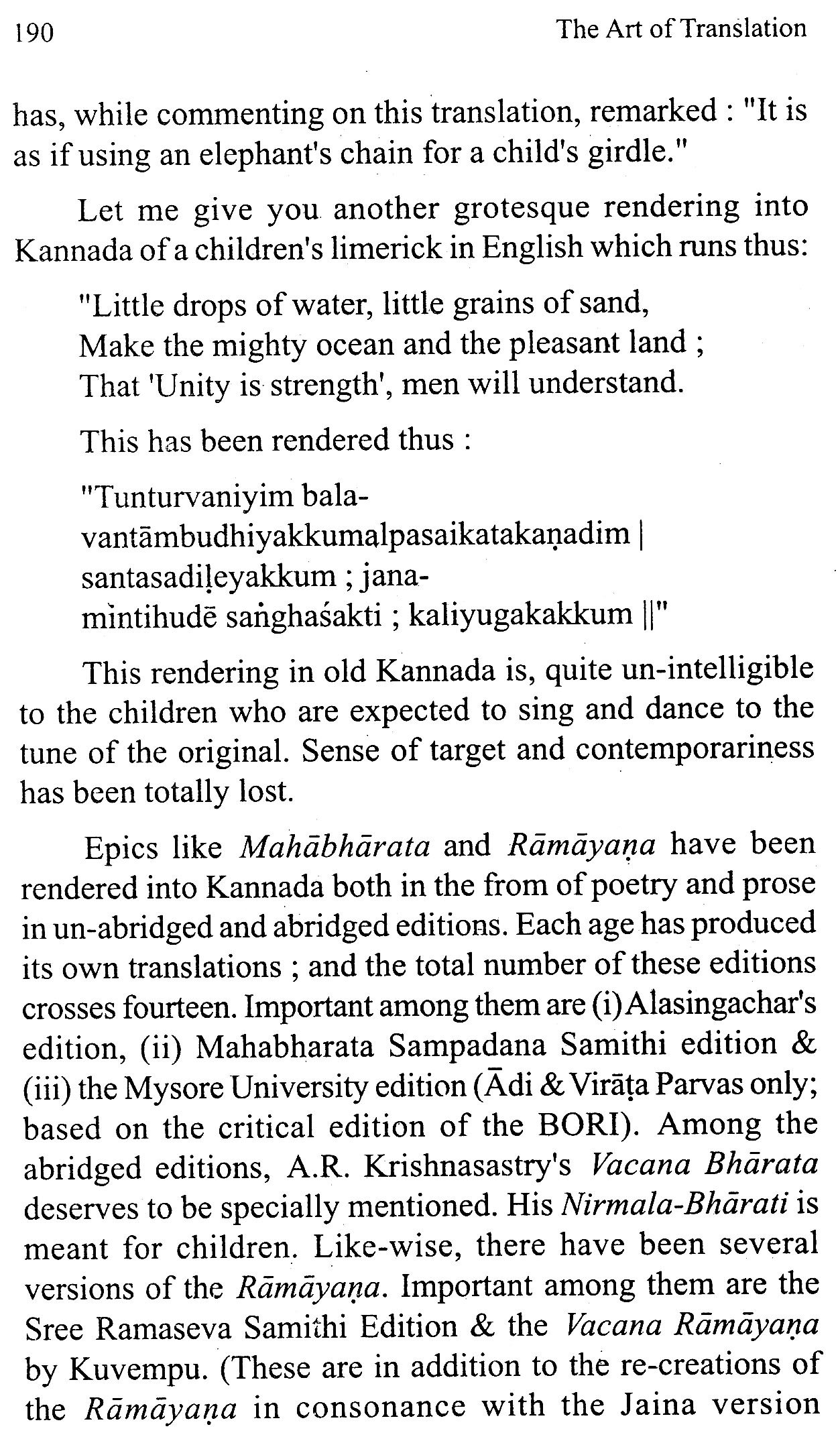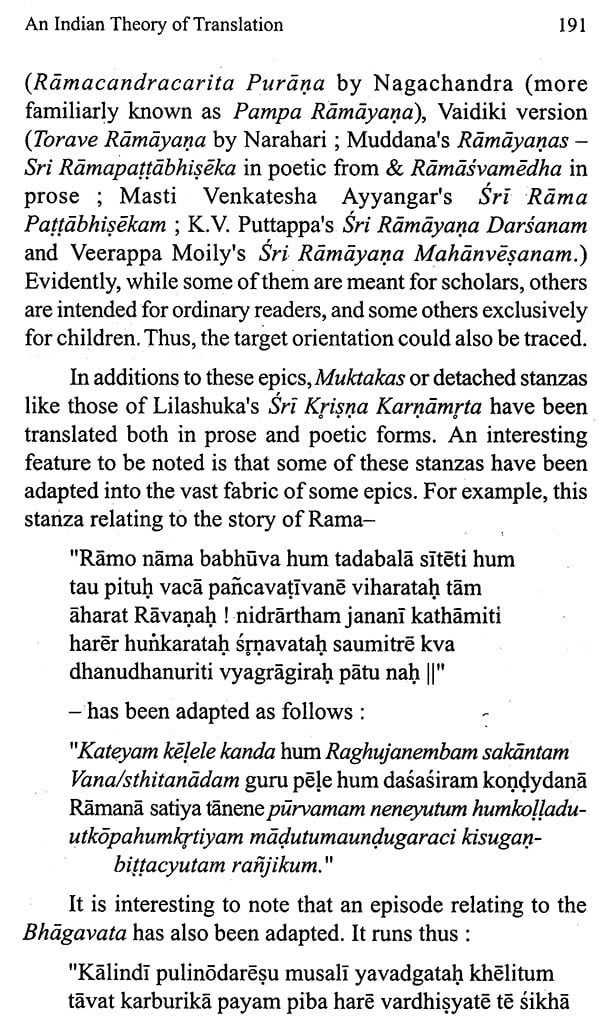
The Art of Translation
Book Specification
| Item Code: | NAX104 |
| Author: | Pradhan Gurudatta |
| Publisher: | Dravidian University Campus |
| Language: | English |
| Edition: | 2004 |
| Pages: | 198 |
| Cover: | PAPERBACK |
| Other Details | 9.00 X 6.00 inch |
| Weight | 240 gm |
Book Description
That the foundations of Indian culture were deeply embedded in Dravidian culture is now an incontrovertible fact. Dravidian culture is one of the most ancient cultures of the world. Those cultures, slightly contemporaneous to one another, slowly started fading out. However, the primordial Dravidian culture continues to thrive without losing its quintessence despite the apparent changes in systems of dress and address.
Dravidian University was established in 1997 to mirror the real and rich picture of Dravidian culture not only in its linguistic, literary, cultural and philosophical facets, but in science and technological angles also.
The spirit of integration is the guiding force behind the creation of the University. The linguistic and cultural integration, not at the regional but at the national level is the cherished objective of the University.
The Government of Andhra Pradesh started Dravidian University, with the co-operation of the sister states, to research and reflect on the inherent oneness of the cultures of the four states whose languages number up to 27. Its endeavour is to promote unity and amity in the family of several languages. The main objectives of Dravidian University are to augment the common weal and social well—being of the communities of marginal languages and to build bridges among the Southern States. While working on each language separately in varied areas, it aims at a synthesis and a discovery of the common heritage through Comparative Studies.
Dr. Pradhan Gurudatta, Former Professor of Kannada and © Head of the Translation and Text-book Bureau of the Institute of Kannada Studies of the University of Mysore and the present Chairman of the Translation Academy of the Govt. of Karnataka, has established himself as an authority on translation and comparative studies. He has to his credit more than 150 publications in English, Kannada and Hindi languages, including quite a number of translations. He has, during the course of the last four decades, written extensively on the various aspects of translation and on the contributions of scores of translators. He has been one of our distinguished resource persons in our country, whenever workshops, seminars and symposia on translation are held or organized by the national institutions of letters and the universities. Ever since the inception of the Dravidian University, he has been associated with its academic activities in various capacities. In fact, when the Dravidian University had recently arranged a national symposium on 'An Indian Theory of Translation’, his paper on this aspect caught the attention of scholars. His authoritative monograph on The Art of Translation and a compendium of his articles on translation and translators entitled Anavarana have been very well received. The Dravidian University has tried to give a new dimension to language studies, with each of the language departments concentrating on mutual translation activities. It was in this context that the Dravidian University planned to bring out the translation of Dr. Gurudatta's monograph in all the other Dravidian Languages. Further, I requested him to prepare an exclusive monograph in English also. He has kindly consented to do this academic favour.
His present monograph not only delineates on the principles and theories, and problems and methods of translation, but also throws light on the recent trends of translation like Conference Translation, Simultaneous Translation, Interpretation, Translation of Film Scripts, Machine Translation, etc. We earnestly believe that this will not only prove useful to the practioners of translation, but also to the academicians in the discipline.
We would like to express our sincere thanks to Dr. J. Jayalalitha, Associate Professor in the Department of Kannada, for giving us a beautiful rendering in Tamil of Dr. Gurudatta's monograph. We hope that the Telugu and Malayalam renderings will also come out soon. Our thanks are also due to Mr/s. Udayaravi Printers, Mysore, especially to Sri M.G. Krishnamurthy & Sr M.G. Brahmanya Theertha, for their neat execution of the printing work.
The credit of starting the discipline of translation in the University of Mysore, as early as in the latter half of the sixties of the previous century, goes to Prof. D. Javare Gowda, Former Vice- Chancellor of the University of Mysore. (I was destined to be one of his students whom he trained in the first batch). This initiative was soon followed by several other Universities in the state of Karnataka and the Open Universities like the Karnataka State Open University and the Kuvempu University, to mention a few. I was asked by these institutions to prepare some master lessons under their Distance Education Programme. I did provided the study material both in English and Kannada. The B.M. Srikanthiah Foundation, Bangalore, brought out in Kannada my monograph on this subject. Its revised edition has been published by M/s Sapna Book House, Bangalore. This has been hailed as a pioneering work of its kind and a useful hand-book both for the practitioners and academicians. It won for me several awards and prizes, including the Mysore University Golden Jubilee Research Award. It has given me great satisfaction.
I felt it a great honour, when the Dravidian University, especially its esteemed Vice-Chancellor, Prof. G. Lakshminarayan, proposed that my monograph should be brought out in the other Dravidian Languages, and in English also. I am grateful to him for this great honour conferred on me. With the Govt. of India launching the National Translation Mission programme, proposed by Mr. Sam Pitroda, translation activities in our country will, I believe, assume new-dimensions, and a new era of translation will begin. I hope that this monograph in English will prove useful to the scholars and translators interested in the field.
I take this opportunity to thank Prof. D. Javare Gowda for the inspiration he gave me for undertaking this venture, and to Prof. L.S. Seshagiri Rao, Prof. T.P. Ashoka, Prof. M.V. Seetharamaiah and other distinguished scholars for their appreciative gestures, and to the authorities of the Dravidian University for their rare enterprise in enlarging the dimensions of the usefulness of this monograph, and to the translators of the other versions.
